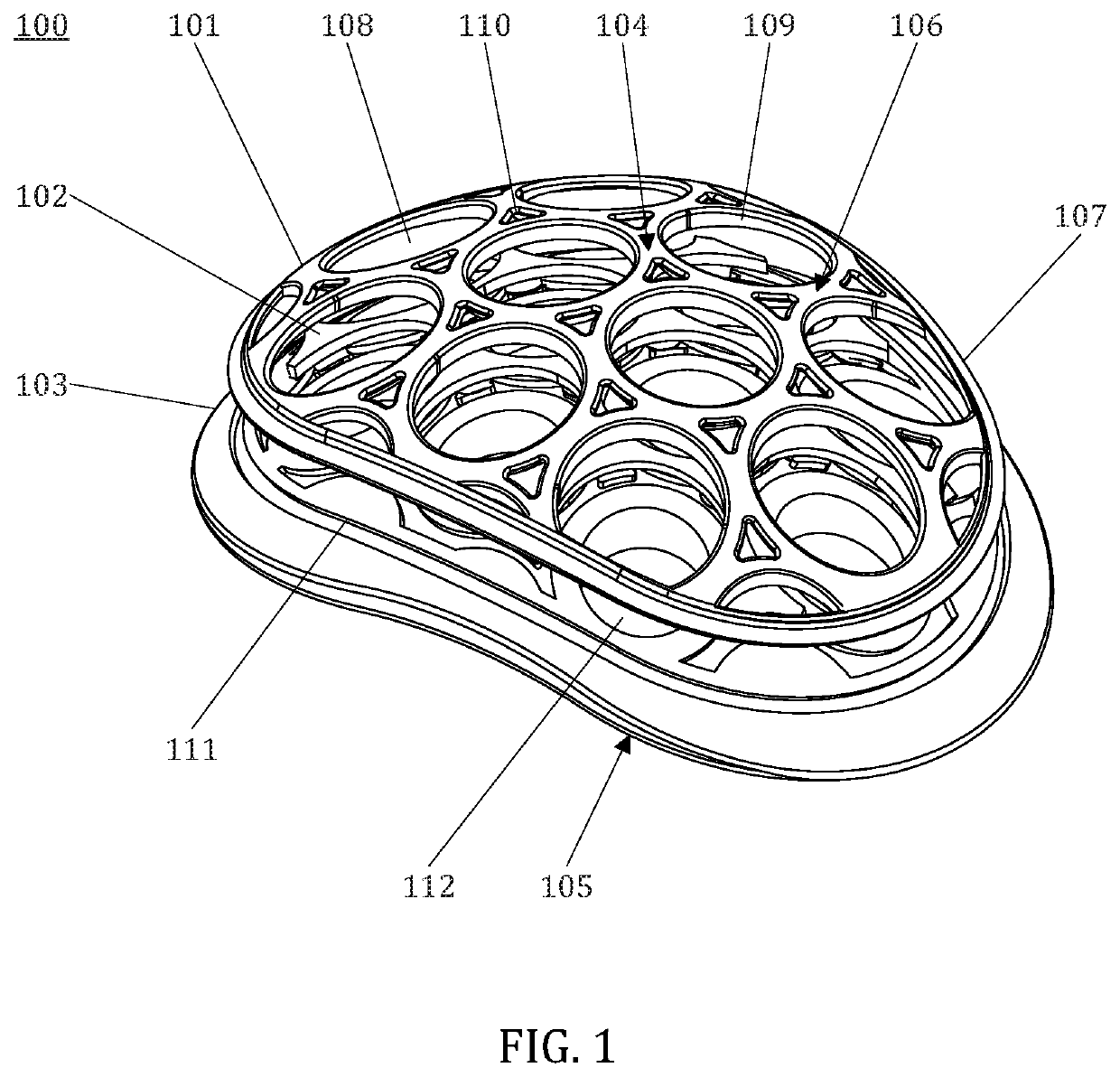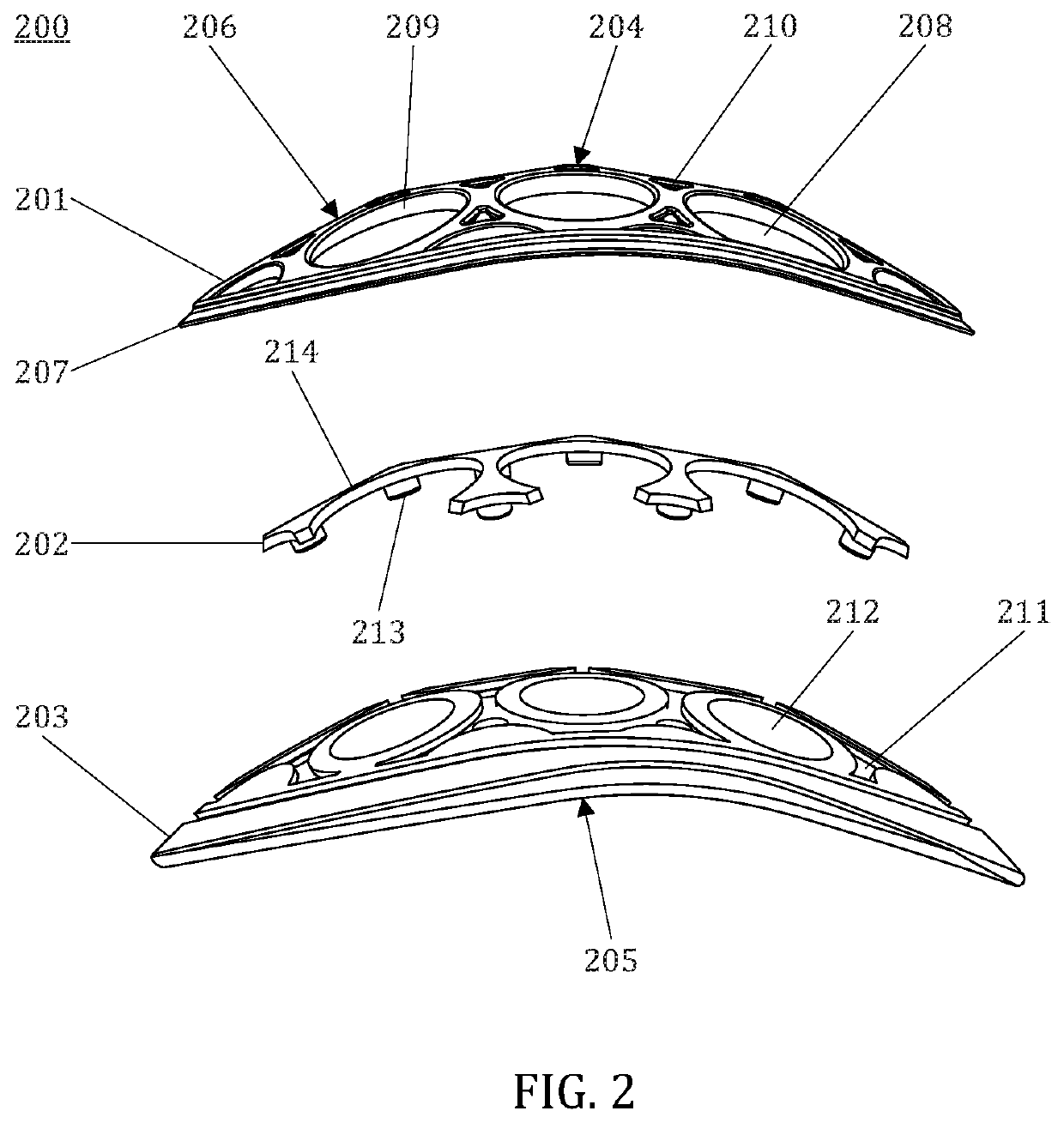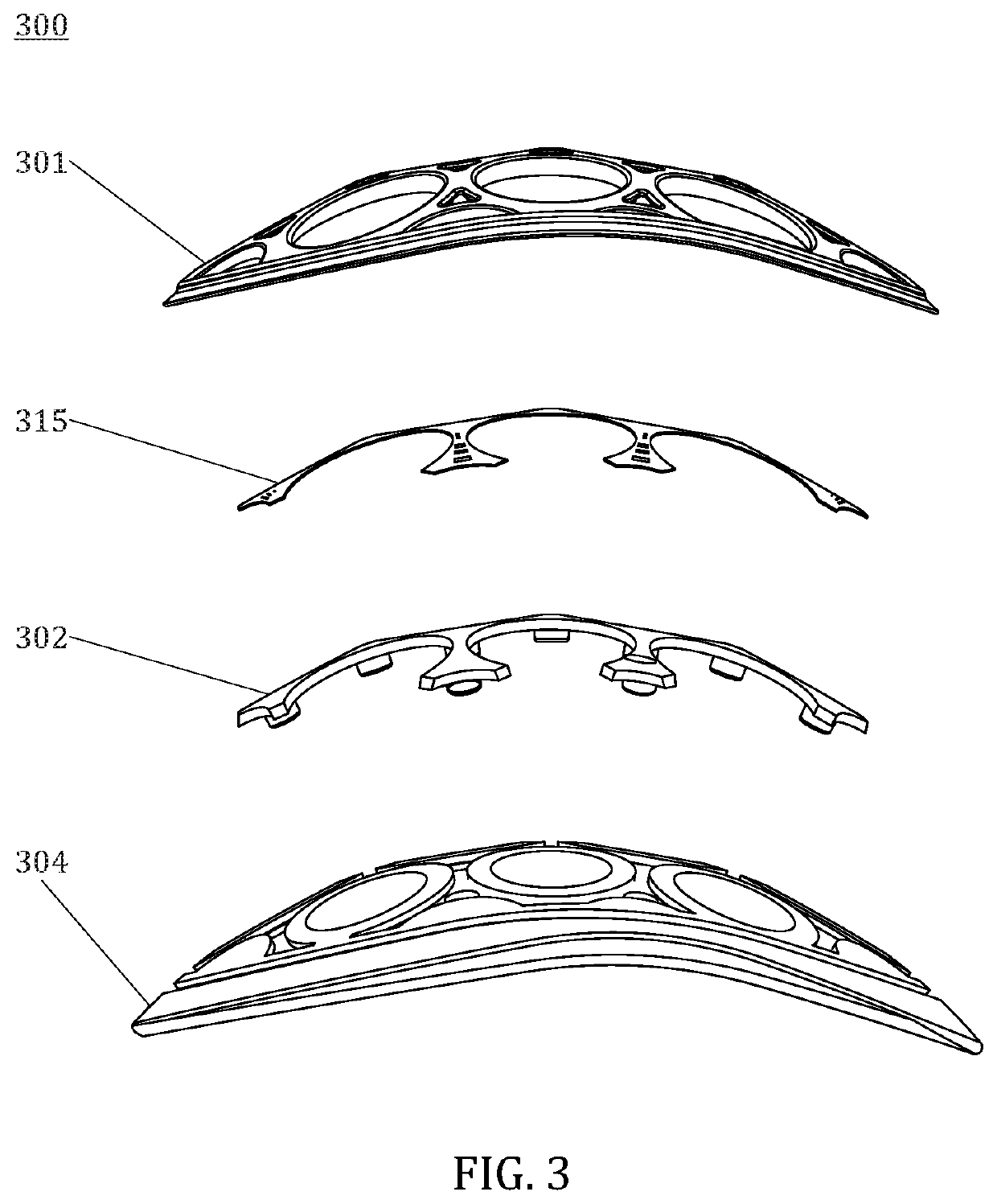A Layered Protective Structure For Protective Garments And Equipment And An Elastic Layer
a protective structure and elastic layer technology, applied in the direction of protective garments, garments, sport apparatus, etc., can solve the problems of inability of the piece to effectively distribute shock over a wider area, discomfort and fatigue, and the inability so as to reduce the probability of injuries, and improve the effect of impact spreading
- Summary
- Abstract
- Description
- Claims
- Application Information
AI Technical Summary
Benefits of technology
Problems solved by technology
Method used
Image
Examples
second embodiment
[0068]FIG. 2 shows a protective structure 200 as seen from side. The layers are separated from each other for the sake of clarity. The protective structure has a first surface 204 and a second surface 205 and comprises at least three layers: a first layer 201, a second layer 202 and a third layer 203.
[0069]The first layer comprises a mesh structure 206 and a border frame 207. The mesh structure has a multitude of first layer holes 208 extending through the first layer. Between the holes are rib structures that form the frame of the mesh structure, and one surface of the rib structures forms the outer surface of the protective structure 200, i.e., the first surface 204. The first layer is slightly curved. The middle point, i.e., the top point of the mesh structure is located higher than the border frame (i.e., the top point is vertically farthest from the border frame plane). Even the slightly outward (i.e., the direction away from the user of the protective structure when the protec...
third embodiment
[0072]The third layer 203 comprises third layer holes 212 and third layer grooves 211 to receive both parts of the first layer 201 and the second layer 202. In some embodiments the first layer and the third layer are fixed to each other. The fixing can be done by, for example, knitting, stapling, gluing or a similar means, the border frame 207 to the third layer material. FIG. 3 shows a protective structure 300 as seen from side. The layers are separated from each other for the sake of clarity. The protective structure comprises at least three layers: a first layer 301, a second layer 302 and a third layer 303. Between the first layer and the second layer is placed a sensor arrangement 315. The sensor arrangement includes sensors, for example acceleration sensors, and connectors to external devices. In this example the sensor arrangement is a thin flexible printed circuit board. Naturally, the sensor arrangement can be placed and implemented differently.
fourth embodiment
[0073]FIG. 4 shows a protective structure 400 as seen from the side. The layers are separated from each other for the sake of clarity. The protective structure comprises at least three layers: a first layer 401, a second layer and a third layer 403. In this embodiment the second layer has two parts: a first second layer part 402a and a second second layer part 402b. The second layer parts are fixed to each other when the protective structure is manufactured. If the second layer is molded, having a two-part second layer makes it possible to implement hollow second layer bugles. In some embodiments the hollow second layer bugles share the elastic properties of the second layer. Also, it makes the second layer lighter. The protective structure further comprises a sensor arrangement 415. The sensor arrangement can be placed between the second layer parts when fixing the second layer parts together. In that way the sensor arrangement is quite well protected because the second layer stret...
PUM
 Login to View More
Login to View More Abstract
Description
Claims
Application Information
 Login to View More
Login to View More - R&D
- Intellectual Property
- Life Sciences
- Materials
- Tech Scout
- Unparalleled Data Quality
- Higher Quality Content
- 60% Fewer Hallucinations
Browse by: Latest US Patents, China's latest patents, Technical Efficacy Thesaurus, Application Domain, Technology Topic, Popular Technical Reports.
© 2025 PatSnap. All rights reserved.Legal|Privacy policy|Modern Slavery Act Transparency Statement|Sitemap|About US| Contact US: help@patsnap.com



